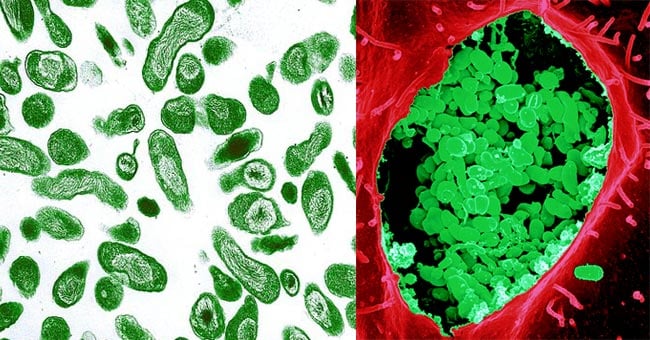Specimen: Blood, tissues from cardiac valve
Interesting Science Videos
Culture
- Culture can be performed in tissue culture cells using human embryonic lung fibroblast cell lines, and recently in a cell-free medium; however, culture is rarely performed except in research laboratories licensed to work with these highly contagious organisms.
Serology
- Serology is the most commonly used diagnostic test.
- A variety of methods are used to measure antibody production: the microagglutination tests, indirect immunofluorescence antibody (IFA) test, and enzyme-linked immunosorbent assay (ELISA).
- IFA is the test of choice, although ELISA is used in many laboratories and appears to be as sensitive.
- In chronic infections, the antibodies to phase I antigens are elevated whereas in acute Q fever, immunoglobulins IgM and IgG antibodies are developed primarily against phase II antigens.
- Complement fixation test can also be done detecting IgG antibodies to phase II antigens.
- A diagnosis of chronic Q fever is confirmed by the demonstration of antibodies against both phase I and II antigens, with the titers to the phase I antigen typically higher.
Molecular Methods
- PCR amplification has been used to detect C. burnetii DNA in clinical samples from acute and chronic Q fever patients.
- Strains of C. burnetii differ in their plasmids which they carry.
- QpH1 plasmids are found in acute Q fever isolates; whereas QpRS plasmids are found on the strains isolated from endocarditis patients.

Treatment of Coxiella burnetii
- Most infections resolve without antibiotic treatment, but administration of doxycycline reduces the duration of fever in the acute infection and is definitely recommended in cases of chronic infection.
- Fluoroquinolones (e.g., ofloxacin, pefloxacin) have been used as an alternative to doxycycline but are contraindicated in children and pregnant women.
- The newer macrolides have also been shown to be effective in the treatment of acute pneumonia.
- Chronic Q fever requires prolonged treatment for 18 months or longer with a combination of doxycycline and hydroxychloroquine.
- In Q-fever endocarditis, long-term administration of a combination of two drugs, combination therapy among doxycycline, ciprofloxacin and rifampicin has been suggested to prevent relapse.
Prevention and Control of Coxiella burnetii
- The presently recommended conditions of “high-temperature, short-time” pasteurization at 71.5°C for 15 seconds are adequate to destroy viable Coxiella species.
- Exposure can be reduced by construction of separate facilities for animal parturition, destruction of suspect placental membranes,heat treatment of milk and efforts to reduce the tick population.
- Occupationally exposed persons may reduce their risk of infection with burnetii by wearing respirators that prevent aerosol infections.
- Inactivated whole-cell vaccine (Q-Vax) and partially purified antigen vaccines for Q fever have been developed, and the vaccines prepared from phase I organisms have been shown to provide the best protection and is recommended for occupationally exposed workers.
- Good animal husbandry practices should be followed such as proper disposal of animal excreta and aborted materials, isolation of aborting animals for 14 days.
